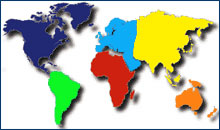Whatever you do, don't ask for a doggy bag
The norms and culture of European dining and restaurants and how a meal in Europe differs from a meal in America
Most European cultures have many different types of dining establishments, which go down in price—but rarely in quality or authenticity—as they get less fancy and formal.
The top rung is called something that sounds like "restaurant" in almost every language. More casual eateries abound, usually smaller and serving classic cooking like mama used to make, be it a French bistro, Italian trattoria or osteria, Austrian beisel, German bierhalle, or Greek taverna. The establishments in this second category are the places to head on a nightly basis for filling, excellent, well-priced food and a homey, friendly atmosphere.
Most cities also sport cafe-like places that serve hearty dishes; in Paris it's a brassiere, in Italy a tavola calda, in Spain a tascas. (For much more on the subject of different types of European eateries, see the "Restaurant Primer.")
Except in some of the top (and snootiest) restaurants in the big cities, you'll encounter stricter dress codes at cathedrals than at restaurants. Remember that Europeans tend to have a keen fashion sense and dress casually well any time they go out; you'll be fine in jeans, but I wouldn't dine in shorts and a T-shirt. If you're splurging on a top restaurant, call ahead to ask if jacket and tie are required for men.
Culinary Stereotypes & Gastronomic Misconceptions
The American versions of European cuisines—whether brought over by immigrants years ago or recently imported by California chefs—usually take a number of liberties with their inspiration.
For instance, several foods you won't find in Italy are: spaghetti and meatballs, hoagies (grinders, subs, torpedoes, or whatever they call them where you live), Italian ices, and deep-dish pizzas (Italian ones are usually very thin and very crispy; if you want deep dish, go to Chicago, where they have raised it to an art form).
The common stereotypes of European cuisines are often off the mark as well. For one thing, there's quite excellent British cuisine—yes, British! Not only is today's pub grub much better than its reputation, but many London restaurants now serve dishes excellent and complex enough to make the French across the Channel jealous. The Italians don't eat only pasta, the German menu extends beyond sausages and beer, and the good people of Vienna have never even heard of those tiny pickled wieners-in-a-can that sully their good name.
Sure, you'll find a McDonald's in the heart of every city, and you'll probably find yourself ordering le Big Mac on occasion (Mickey D's almost always has great clean bathrooms), but I'd recommend sticking to local restaurants. Search out restaurants with the most authentic food and atmosphere. Be daring—order what you don't recognize on the menu, lubricate your meal with copious amounts of local wine or beer, and have a grand old time.
So What's So Different about A European Restaurant?
European restaurants differ from American restaurants in several ways. Most differences are tiny and even petty; I only point them out because even little changes can put one off, and I would hate unprepared folks to start getting cross when the waiter doesn't bring them free glasses of water when they sit down. If you know to expect the little differences, you can start to revel in them.
- The interior design is not a good indication of food quality. Some of the very best restaurants can look much the worse for wear.
- Many have an unavoidable cover charge of $1 to $5 per person; you pay it simply for the privilege of sitting down to a basket of bread. This is annoying, but it is not a scam, so please don't blame your waiter.
- Water does not come to your table automatically. When you order water, you get to choose between fizzy or non-fizzy bottled mineral water. (You can also order water from the tap, but the bottled stuff tastes better.)
- Europeans hardly ever use ice in their drinks, nor do they usually butter their bread (it tastes good enough on its own).
- Service is much more professional, but still very friendly. Waiters don't rush up to introduce themselves by first name and then interrupt every time your mouth is full; rather they appear when you need them and are very helpful.
- Portions are often smaller, but it's because you're expected to order more courses.
- In many countries, every dish ordered is served on a separate plate, so don't expect a little pile of vegetables to come automatically next to your steak. You have to order a side dish separately.
- The salad usually comes at the end of the meal, before dessert (which makes a lot more sense, digestively).
- You can't take it with you. European's don't do the doggy bag thing, and many will be highly confused if you point to your half-eaten plate and ask for the balance of your meal to go—especially if you use the term "doggy bag." I've seen many comical exchanges between American diners and European waiters who either are (a) dumbfounded as to why you don't wish to finish your dinner in the restaurant, (b) insulted when they mistake your intentions to be a belief that their fine cooking is only good enough for your dog, or (c) horrified and disgusted as they hasten to assure you that "Eet is veal, veal! Eet come from cow, not from dog!"
- The tip (call it the "service") is often included in the bill, so always ask. If it's already included and the service was good, leave a bit more on the table anyway. If service isn't included, leave 10 to 15% of the bill.
Related Articles |
Outside Resources |
This article was last updated in August 2007. All information was accurate at the time.
Copyright © 1998–2010 by Reid Bramblett. Author: Reid Bramblett.



 ShareThis
ShareThis

